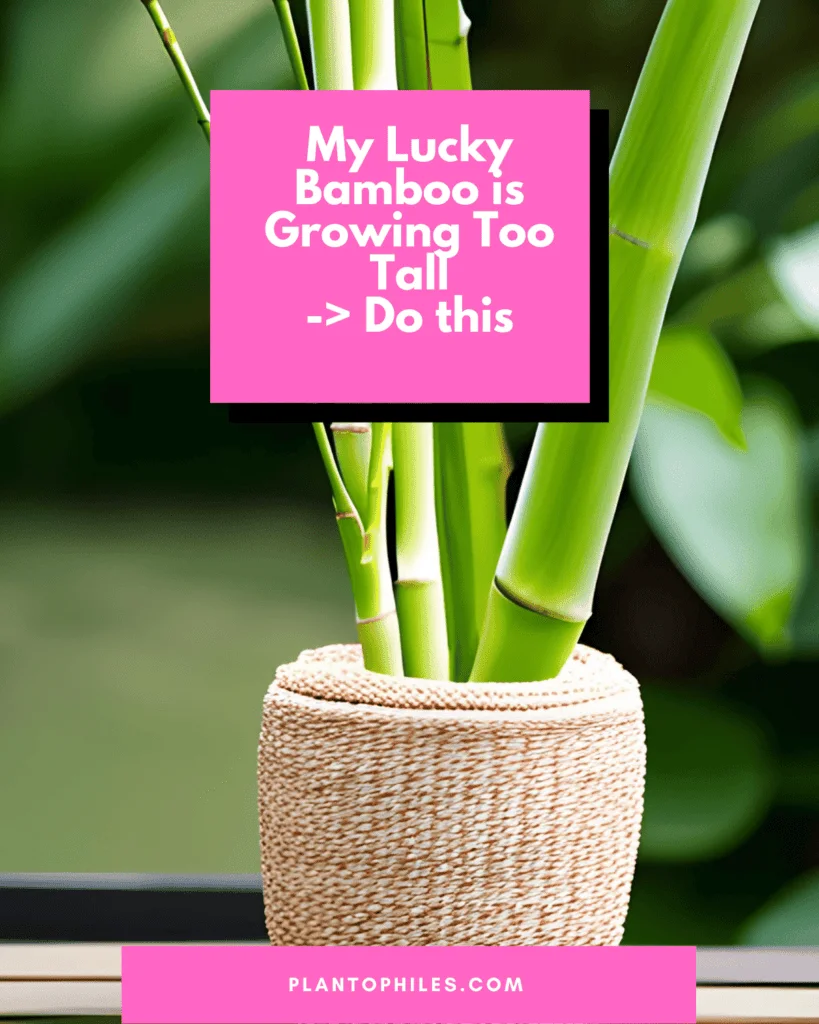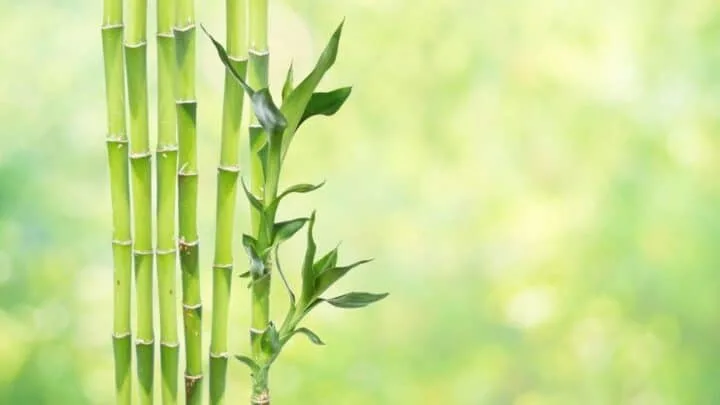Lucky bamboo is a beautiful houseplant beloved for its thick, notched stalks. Its lush green leaves grow on new stems that emerge from these stalks.
Despite not being part of the bamboo family, this tropical dracaena strongly resembles the genus it gets its nickname from.
Lucky bamboo can be shaped into striking designs. It is frequently trained into spirals or braided together, and these living sculptures are used by many to contribute to the feng-shui of living space.
However, because of its prolific growth, lucky bamboo owners may find that their bamboo has grown too tall and no longer fits the container, vase, or location in the house they had chosen.
When this happens, it might be time to think about pruning the plant.
You can trim down new growth using a clean knife. Snip the stems just above one of the nodes, which are the notch-like lines that separate the bamboo into segments. You can also cut back the lucky bamboo stalks. Cut just above the node at the desired height. Cuttings can be propagated.
Table of Contents
My Lucky Bamboo is Growing Too Tall
Cut it above a node if your lucky bamboo is growing too tall. This way, you get a cutting that you can propagate into a new plant. Let the cutting callous over and transfer it into a cup with water or put it directly into the soil. The cut lucky bamboo will grow new shoots and continue growing after a while.

What you should know about “topping” lucky bamboo
Before you cut your plant, it is important to understand that once lucky bamboo stalks have been cut, they will no longer grow. By snipping or cutting a stem or stalk above the node, you are determining the height of the stalk.
New growth will emerge from the side of the stalk, just below the cut. These stems will grow upwards and sprout leaves, giving a “topped” stalk its luscious, green look.
You can cut a stalk that has already been “topped” down further using a disinfected pair of snips.
While topping a lucky bamboo can help reinvigorate its growth, it is not a solution to most other problems your plant may suffer from. If you suspect your plant is having serious problems, read up on how to save a dying lucky bamboo plant.
How to cut your lucky bamboo
Once you have decided that your lucky bamboo has grown too tall and will need to cut it, you must assemble the right materials to do so.
Most importantly, you will need a sharp, disinfected knife or clippers. You should also have a misting bottle handy.
If you want to propagate your cuttings, you will want to have a clean vase or jar nearby to place the fresh off-cuts. You may want to purchase a rooting hormone from a garden store to encourage root growth in the new cuttings.
Ensure you also have filtered or distilled water to fill the jar in which you will propagate your cuttings.
Once you have gathered all the materials you need, consider how tall you want your plant to be. Then, find a node on the stalk at approximately the desired height.
Cut using your knife or clippers two to three centimeters above your chosen node.
If you plan to propagate the cuts, ensure they are at least ten to twelve centimeters long.
If your lucky bamboo plant has already been topped, and you are now only trimming down new growth and not the main stalk, you might choose to make cuts on different stems.
You can also choose to simply cut away all the new growth, following the same principle of cutting just above the node, so that the stalk looks more or less as it did after it was first topped.
Alternatively, you can also cut away new growth at the place where it joins the main stalk. This will completely remove the shoot, and your lucky bamboo will be a clean, simple stalk once again.
Once satisfied that you have made the cuts you want and have gotten your lucky bamboo down to the desired height, you should leave the stalk alone for several days.
After these days have passed, begin to mist the top of the stalk using your misting bottle. This will encourage new growth and keep the plant healthy. Make sure you are keeping your lucky bamboo in bright, indirect light. If you have questions about the different light requirements for houseplants, read this explanation of light levels for houseplants.
Propagating cuttings
Propagating cuttings is a great idea. Whether you want to keep the new plants for yourself or want to give them as a gift to loved ones, it is always smart to propagate the off-cuts of lucky bamboo, which tends to be quite an expensive plant.
If you would like to propagate your cuttings, make sure you have a small bowl of rooting hormone, a cleaned glass jar, and distilled water ready before you make any cuts to the mother plant.
Once you have cut, dip the end of the new stem into the rooting hormone and keep it there for about five seconds.
Then, place the stalk into your clean glass and fill it with distilled or filtered water. Alternatively, you can use rainwater. If you have questions about what water to use, read up on the best water for houseplants.
Now, wait for roots to emerge at the bottom of the cuttings. When they do, you can re-pot the propagated lucky bamboo cutting into soil, a terrarium, or a water-filled vase.
Frequently Asked Questions
Why is it important to disinfect my knife before I cut into lucky bamboo?
It is important to disinfect the knife you use to cut into lucky bamboo because it prevents the transfer of unwanted bacteria into the stalk. Dracaena sanderiana is a particularly sensitive plant and could die if contaminated with undesirable bacteria.
How long will seeing new growth on a cut stalk of lucky bamboo take?
New growth should emerge within the first three to five weeks after cutting.
Does it matter what time of year I top off lucky bamboo?
If possible, cut your lucky bamboo during the winter. Winter is the season of slow growth, and having the plant ready to go before spring will allow it to maximize the benefits of the growing season in spring and summer.
When your lucky bamboo grows too tall, simply cut it using a knife or a pruning shear. It continues growing from the node below the cut.

Daniel has been a plant enthusiast for over 20 years. He owns hundreds of houseplants and prepares for the chili growing seasons yearly with great anticipation. His favorite plants are plant species in the Araceae family, such as Monstera, Philodendron, and Anthurium. He also loves gardening and is growing hot peppers, tomatoes, and many more vegetables.


